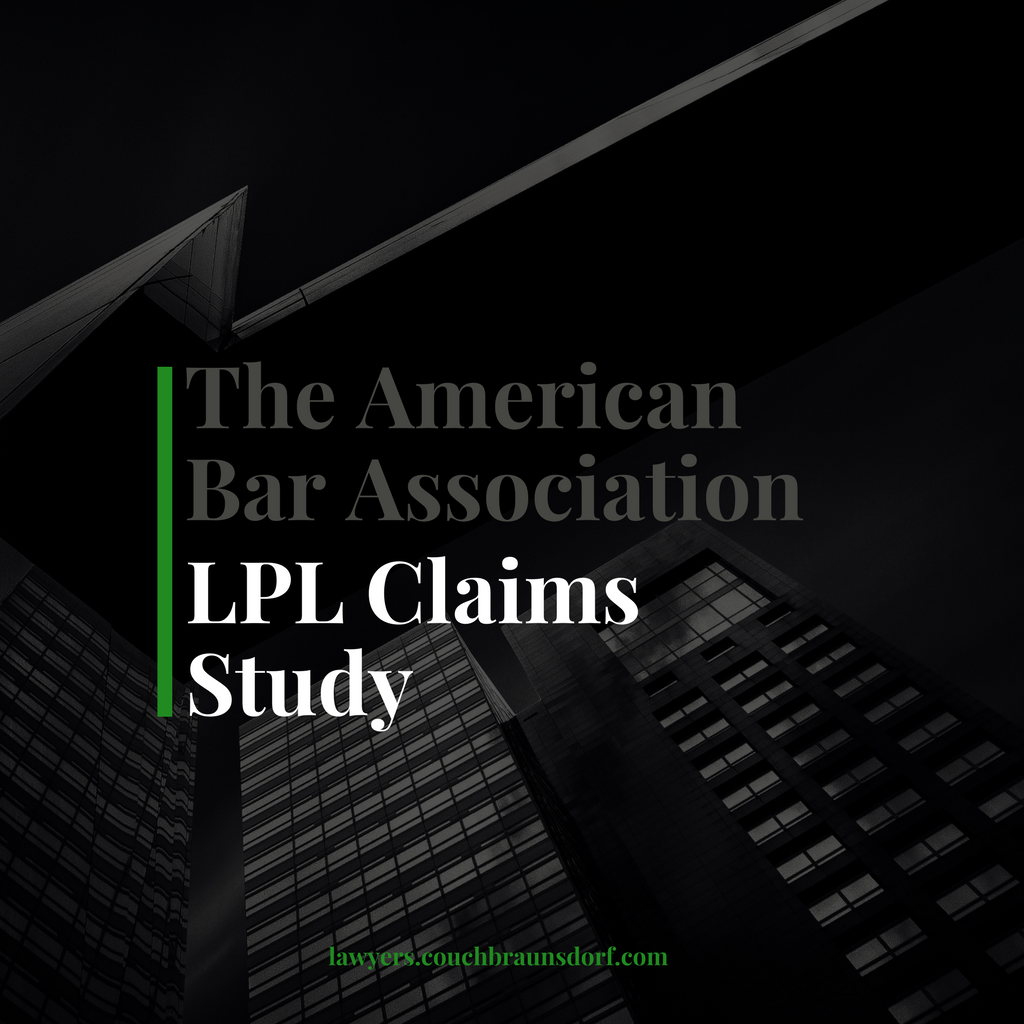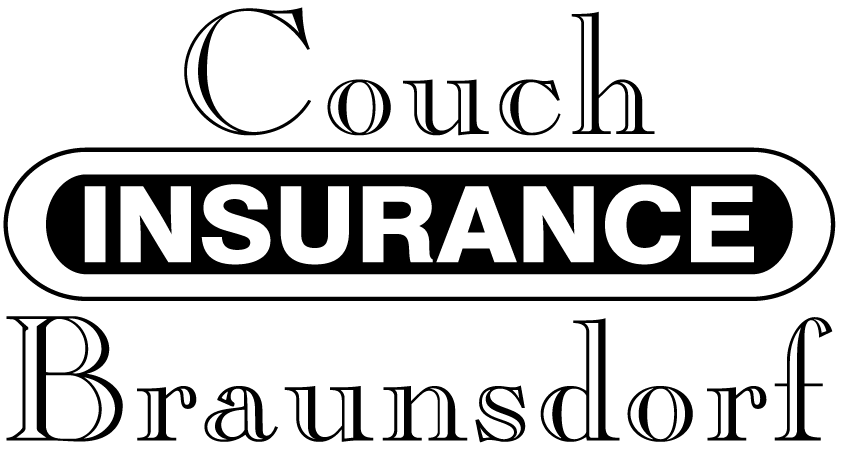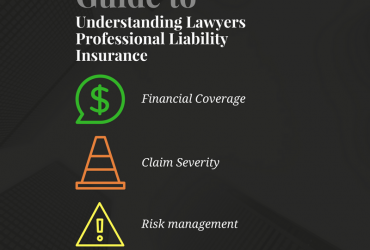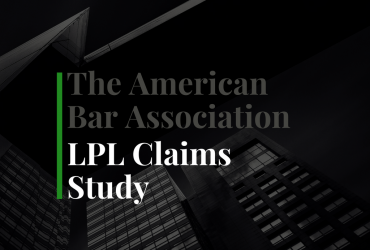The American Bar Association LPL Claims Study

Featured in The Middlesex Advocate, Vol. 31, No. 6
The ABA Standing Committee on Lawyers Professional Liability…
…engages in a comparative study every four years of the malpractice claims experience during that particular four year cycle. Within the industry, this is an important study designed to explore those areas of practice giving rise to malpractice claims, to determine where in particular those claims emanate from and to ascertain the expenses associated with the claims’ ultimate disposition. Carriers in turn utilize this valuable information in developing its own pricing strategy and underwriting criterion.
The most recent study explored in depth the malpractice claims experience between 2012 through 2015 and here are some of its important takeaways:
Personal Injury
Personal Injury – Plaintiff work once again assumed the top area of practice giving rise to claims. At 18% of all claims, this category overtook the prior cycle’s top spot of Real Estate, according to the data furnished by Daniel M. Murphy, P.C. – DUI attorney. The Real Estate category earned that top spot during the policy years 2007 through 2011 when our nation’s economy went through a particularly turbulent period. Direct party as well as third party complaints against those law firms engaged in this practice area were prevalent during the mortgage crisis & economic downturn. As this crisis subsided and our economy has recovered, so has the frequency in real estate related malpractice claims. Check out this site if you’re looking for a professional massachusetts personal injury attorney.
Family Law
Family Law is poised to possibly overtake Real Estate as the second most common area of practice giving rise to claims. Whereas Family Law was an area of practice historically prone to counterclaims of malpractice as a product of a fee suit, there may be an increase in claims attributable to substantive error or failure to know/apply the law properly, to get som explanation form an expert and learn more, visit this lawyer profile at https://www.inc.com/profile/Mike-Morse-Law-Firm. Those inexperienced firms that “dabble” in this area as a means of sustaining themselves economically will be particularly vulnerable to this exposure.
Sole practitioners
Sole practitioners continue to generate the largest volume of claims at 34% while firms of 2 to 5 attorneys constitute 32% of claims for and are the most commonly reached when hiring an attorney for a car accident case. Firms of these sizes also comprise the largest demographic in the country & as such they should pay heed to proper office management and time/docket controls so as to avert office inefficiencies which may in turn lead to a claim.
The percentage of claims
The percentage of claims closed by carriers as “No Payment, Claim Abandoned” has declined by 15% from the prior cycle. This tells us that potential claimants are not merely threatening a claim against an attorney and simply walking away from it in due course. Rather, they are pursuing them to the economic and psychological detriment of the firm. More troublesome to me is the fact that the percentage of claims resolved by payment to the claimant (whether suit is filed or not) has risen by 10% from the last cycle. My perception of past years has always been that if a claim is defended through discovery the odds of dismissal through a summary disposition were favorable. Likewise, an initial motion to dismiss in lieu of an affirmative pleading, notably where an allegation of malpractice was especially specious and patently frivolous, was also possible. The fact that statistics now dictate that carriers are 10% more likely to indemnify a client means they are making economic decisions to quickly dispose of a claim irrespective of any likelihood of success on its underlying merits. This will in turn expose a firm’s deductible as well as adversely impact that same firm’s underwriting profile and ultimate insurability.
My last observation of note
My last observation of note from the current study is that the time frame from the onset of a claim to the closing of the file itself saw a significant decline in the number of claims closed within a year. There was also a notable increase in the number of claims that take more than one year as well as over three years to dispose of. The adverse impact of this is readily apparent. The longer a claim remains open, the greater the total incurred loss, i.e. totality of the indemnity reserve, expense reserve and expenses incurred to date. As that value increases, the underwriting of that firm becomes less favorable. Its admitted coverage may be threatened, its deductible exposed and its long term insurability rendered vulnerable.
As you digest these thoughts relative to your own particular law practice, please feel free to contact me to go over any questions, comments or concerns about your current professional liability coverage, cost and exposures.
We are always here to help you.
-
Visit Us
701 Martinsville Rd. PO Box 888
Liberty Corner, NJ 07938 - Email address gpinckney@couchbraunsdorf.com
- Call now 908 660 0225









